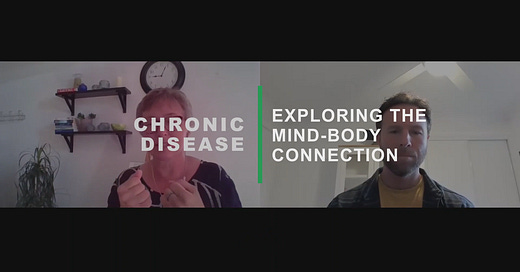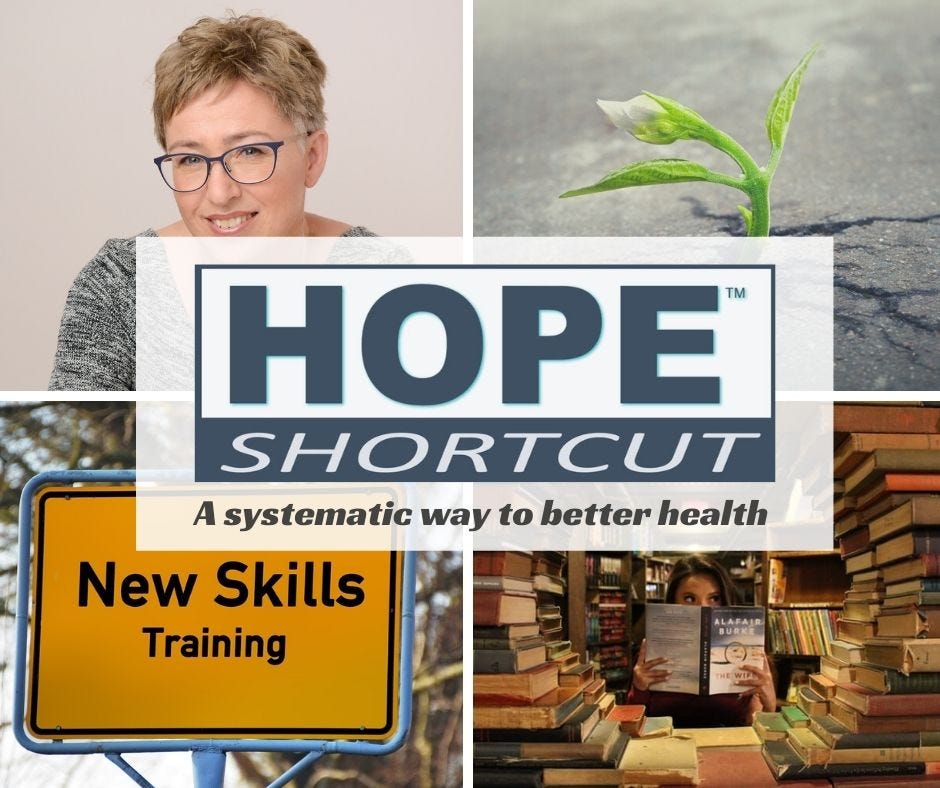"As long as you say that mental disease is only mental, and you say that chronic disease is only physical, you lack more than 50% of how you can help people. So we have in our society, it's built up on this myth that we are separated in mind and body."
"And there we have the problem. If you glue these two things together, that's how it is. No one exists without each other."
This is the first part of a serialization of my long form discussion with Benny Fergurson aka the Movement Monk.
Transcript
Benny: I'm here today with Lilian. I'm really grateful to be able to have this conversation today and share it with all who are listening. This kind of started, Lilian and I were having a conversation, and she was sharing about some really interesting work that she's doing, particularly in the role of Parkinson's and other different conditions that we don't always have solutions for because we're trying to treat the symptom and not looking at what's happening in the deeper underlying experience, the mind and in the body. So I'm really happy that we get to have this conversation.
I hope that it benefits those of you who are listening and gives some other alternatives for how we can look at these things. So that's why we're here. It's great to be here with you, Lilian. I suppose if you could just give a little intro to some of your journey of where you've gotten to, I think that would be a good place to start.
Lilian: Hi, and thank you for inviting me to this conversation. I'm living in Denmark, and I have for seven years onboarded the world of chronic disease. It started when I got my education as a therapist. There was one of the teachers, that told me that he has heard about a guy with Multiple Sclerosis that has helped himself out of a wheelchair. That made me very curious.
So I started my own project with four people with chronic diseases, and I used my skills as a new certified coach and therapist and saw what I could do. I was pretty amazed. Of course, I couldn't heal them. I gave them five long sessions each. But we picked a small area of their problem, a hand that could not move, a tremor with the Parkinson's guys, mood issues or whatever. A lot of things happened that gave me the insight that a lot could be done.
I'm from the scientific world. I have a master in biology as well. I was sort of stuck in that belief that you have physical diseases and mental diseases and becoming a coach, I know that what I can do is to reduce stress.
With a therapist area, I can reduce people's traumas as well. Then I got so convinced that I chose chronic diseases as a subject. Parkinson's is interesting in the way that people have the tremor. So I can immediately see the result of my work. So when people have a tremor and we do some things and the tremor stops, that is my feedback that something good has happened. It's not that it stopped forever. It starts maybe a few minutes later and then I can ask what happened. Then people tell the story, “oh, I just thought about my workload tomorrow” or similar. So it's you can say the disease is visible for the therapist. So it's easier to interpret what's going on.
Benny: I think that's such a powerful reflection. You know, it's one thing that I find just really resonant with the work that I do as well of that, that real-time feedback. So often we don't always have that way of looking at things. It's kind of like we're guessing and doing this work. Then this kind of creates hope in terms of is it going to work?
A human being going through that is quite emotionally challenging, particularly if they've got a chronic condition and all of that sort of stuff. They've tried lots of things and then often give up and go to take this pill, I suppose more of the Western medical avenue. Not that that's a negative or taking away from that at all, but just seeing how we can work with things and get real-time feedback from the person.
I just appreciate really how you've highlighted that link between the mind and the body and not the separation of these things and seeing the symptom being expressed through the body and then drawing the link and involving the person in that link.
So it's just one really powerful thing that I just wanted to reflect back on this collaborative therapeutic approach rather than a top-down. I'm going to give you this thing or do this thing. It's going to fix you. This involvement process, and I think that's a really important distinction because I work with therapists and practitioners in the health field all the time and see this. I think it's a really powerful part of what you're doing. So thank you for sharing that. Was there more you want to add to that?
Lilian: Now we have all these chronic diseases. And if we could glue these together (The mental and the physical aspects of your health), you have double up in how you can help people (healing modalities). As long as you say that mental diseases is only mental, and you say that chronic diseases only physical, you lack more than 50 percent of how you can help people.
So we have in our society, it's built up on this myth that we are separated in mind and body. So we have our hospital system, mental hospital, normal physical hospital. So going to the doctor, he is the one to decide if your problem is mental or physical.
There we have the problem, that some diseases stuck in this program, this healing modalities. It's the chronic diseases, and I'm pretty sure that's a lot of the mental diseases that could benefit from some physical engagement as well. So if you glue these two things together, that's how it is. No one exists without each other, even wound healing and if you break an arm, it heals faster if you're not stressed, you can find studies around that subject.
So that's how it is. It's glued together. It's like two sides of a coin. You cannot think a thought without it come out physically in one way or another. You cannot move your body in a way without it affecting your emotions or thoughts.
Benny: It's powerful. It reminds me of a saying that I find I use a lot of every single thought is a physical action. I contemplate on that often. I can think all these thoughts and here I am doing nothing - like neurological impulses firing at the speed of light just through our system every moment.
To be continued…
Below is a client of mine before and after therapy. I help him get into a calm state in therapy and that calms the tremor. He starts to tremor again but can regain the calm, tremor-free state by becoming mindful.
This is to show you that symptoms are stress-related and can be influenced by therapy and by your thoughts... or lack of thoughts. This is true of most chronic illnesses and probably most diseases. Mind and body are one.







Share this post